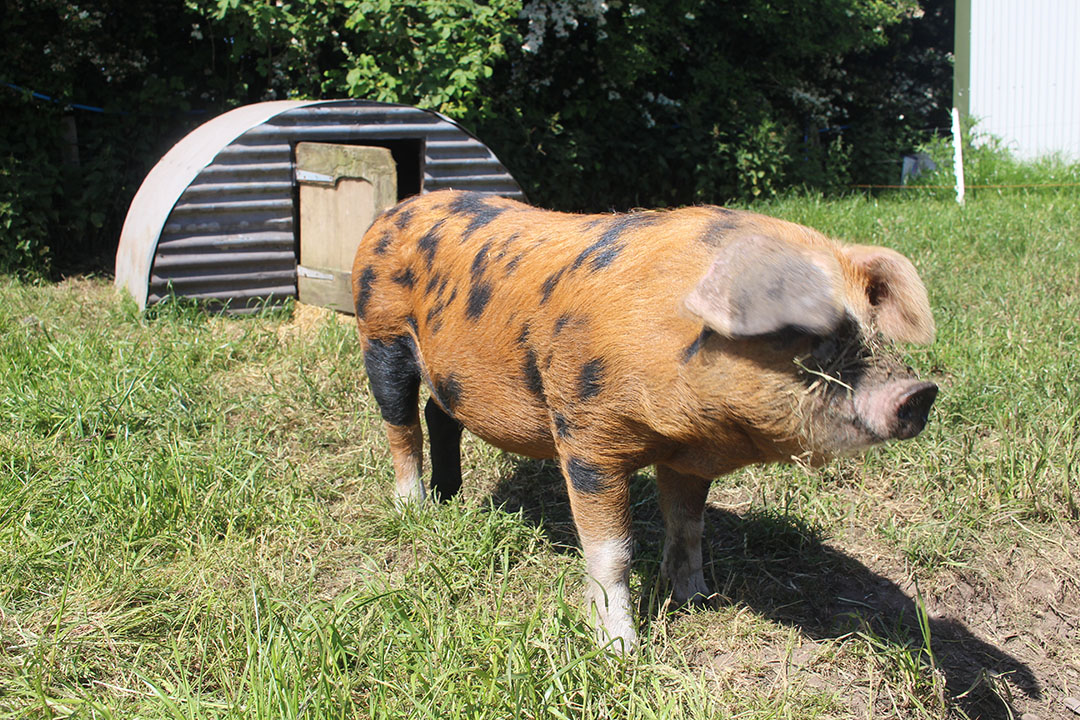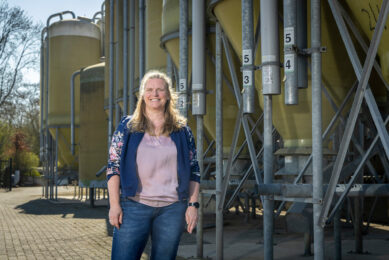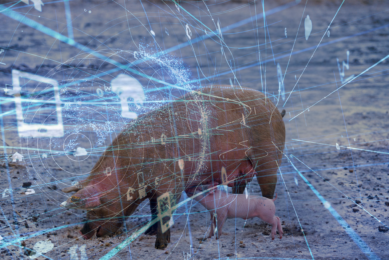Farm visit: Raising a rare breed is a labour of love
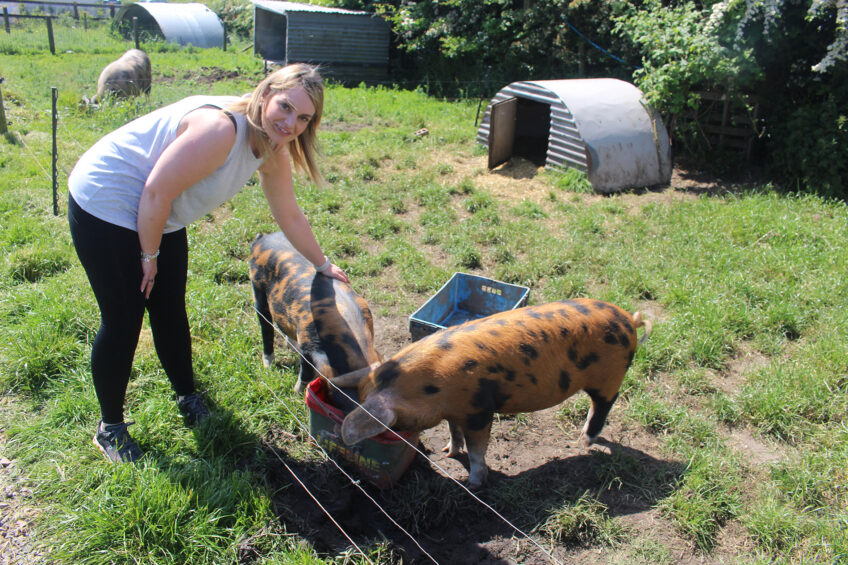
This rare British pig breed has been on the verge of extinction twice, but nowadays the breeding population of the Oxford Sandy and Black pig is stable, with breeders all over the United Kingdom. Pig Progress took a look behind the scenes to meet these ginger and spotted pigs on a farm just north of Liverpool, UK.
“I can be busy getting fresh water all day long. They have a habit of knocking over their buckets all the time.” Farm owner Kelly Gibson shakes her head in amusement while watching 2 shiny ginger animals sticking their heads into a large bucket. It is only a matter of seconds before the 2 5-month-olds find themselves standing with their white feet in a layer of water and mud. Off she goes again, fetching more water.
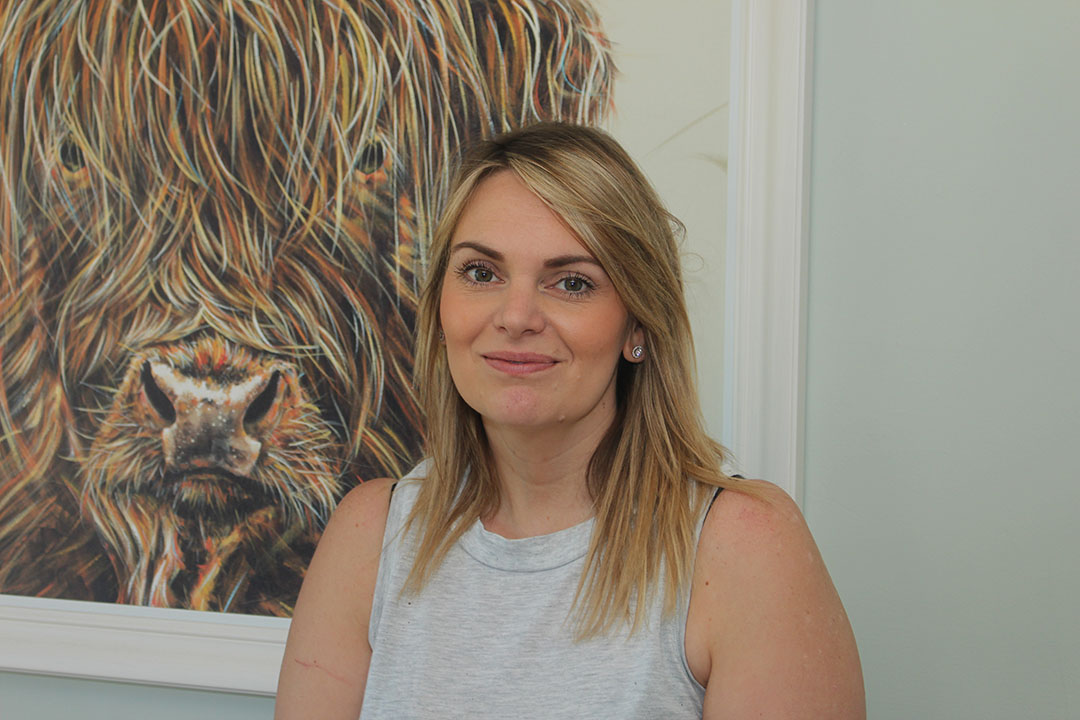
At Cotlea farm, Kelly Gibson has been taking care of Oxford Sandy and Black pigs for 8 years now. For her, raising the breed is a hobby she is passionate about. With pig keeping, Gibson usually manages to break even – but she does not keep them to make a living. For her own income, she depends on her work as a hairdresser.
In her work with the pigs, she is a member of a determined group of enthusiasts who contribute to make sure this British breed continues to exist. Twice in its more than 200-year history, the breed was about to disappear. Thanks to a charity, the Oxford Sandy and Black Pig group, the breed nowadays consists of a stable amount of breeding animals.
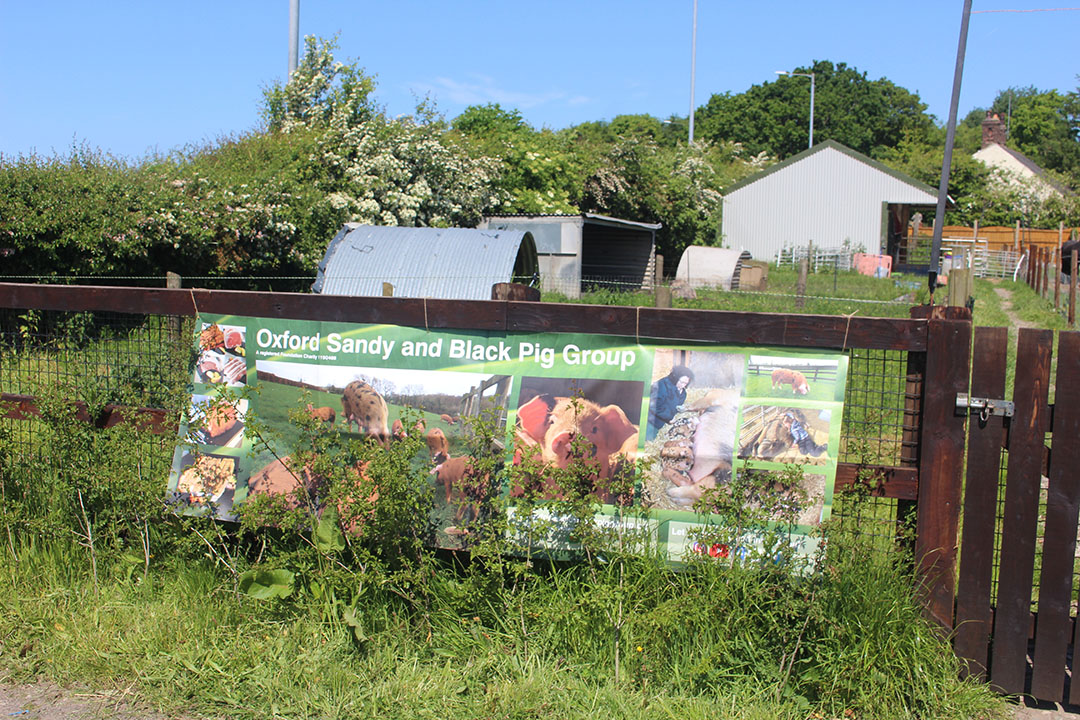
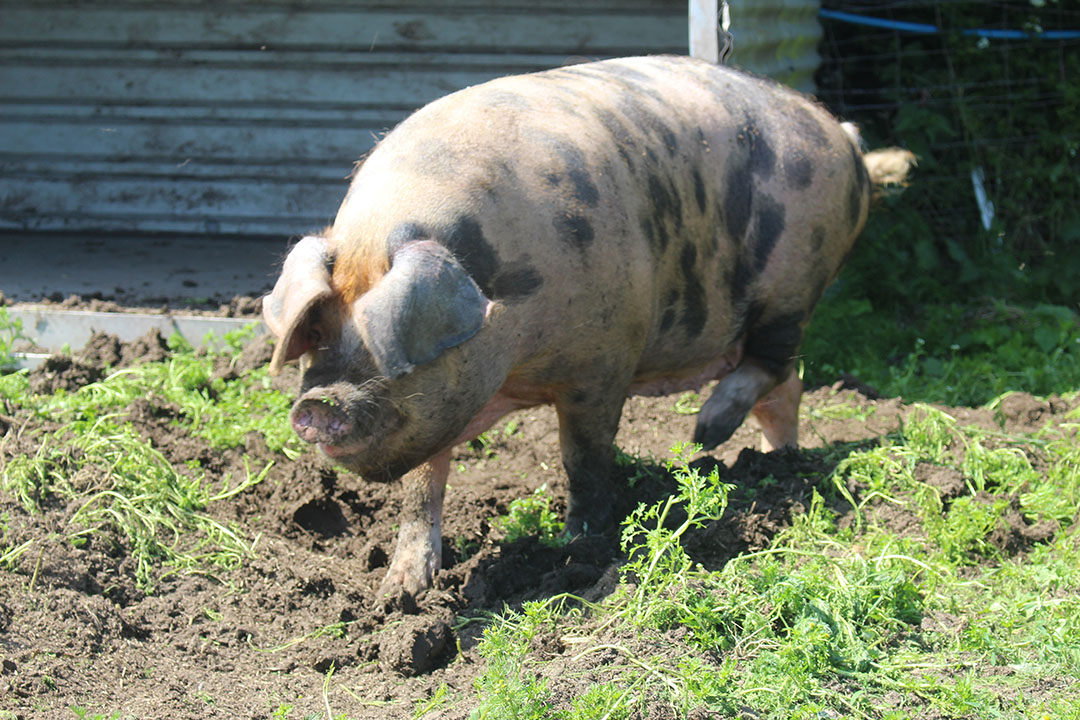
Kind and friendly breed
“The breed is easy to keep, with a gentle nature,” says Gibson. An acquaintance introduced her to the Oxford Sandy and Black pig breed. When she inherited her grandparents’ farmland of roughly 4 acres (1.6 ha), she knew she wanted some pigs. The friend happened to have 2 “Oxford” sows, selling weaners, so it was a small step to obtain a few of them. She says, “I prefer to keep rare breeds as we are hobby farmers. I like to think we are helping to keep rare breeds populated so they do not die out. Most people favour a commercial breed, which is endangering our native breeds.”
Working with grow-finisher pigs, however, proved to be a very time-consuming job. It was strenuous, particularly when the pigs were ready to be sent for slaughter, then making sure transport to the slaughterhouse was coordinated, as well as ensuring all cuts were labelled correctly and sold to interested buyers who appreciate local and authentic produce. About four years ago, she opted for the other side of the job: breeding.
Her friend proved to be the solution as she wanted to sell her sows. Ever since, Gibson has known she’s on the right track. The sows, even though they also present quite a task, proved more manageable. Her farm site can hold 3 sows of the Oxford Sandy and Black breed, and there is also 1 boar. Offspring are weaned at 9 weeks. “You often notice that by then the sow gets agitated, and you can see she has had enough.”
The future of the weaner pigs could mean 3 different things:
The majority go to finisher farms, where future owners do the job Gibson used to do. In this case, she earns about £60 (€ 69) per weaner pig.
A few pigs per litter will stay on the farm for producing meat for the Gibson family. They take the pigs to an abattoir and later to a butcher at roughly 110 kg, at 8 to 10 months.
Some are sold for continued breeding. This is determined on the basis of external characteristics (see also Box). In addition, the animals should have a good underline with the right number of teats (14). If an animal matches all visual breeding criteria, Gibson could sell it for £110 (€ 127).
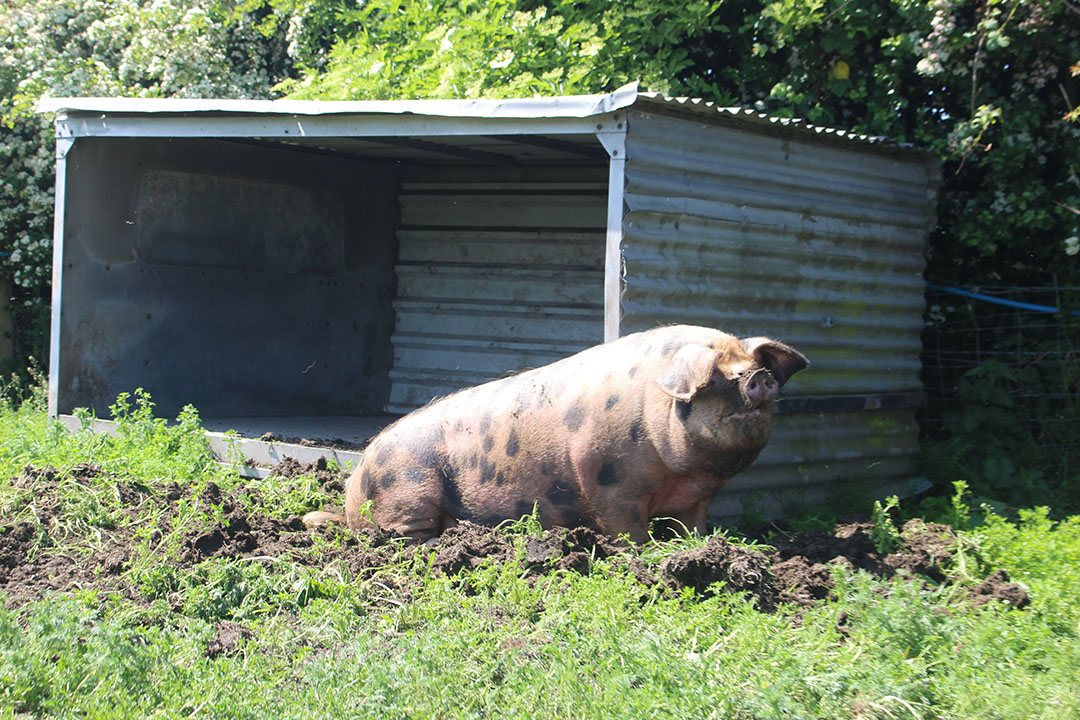
Feeding and health
From a local feed store, the pigs get a ready-made mixture. Gibson supplements this with portions of barley to make feed costs manageable. She feeds the animals twice a day, in the morning and the evening. Gibson is careful with using medication. For precautionary reasons the pigs receive noromectin, as they live outdoors. This is a jab to protect against worms, lice and mange.
Love for pigs
Apart from Oxford Sandy and Black pigs, the farm is also home to a number of Derbyshire Gritstone sheep, another rare breed. The farm population also consists of Texel sheep, 6 beef cattle, a horse and various chickens.
The love for the animals is clearly visible in the farrowing pens. In a shed at the far end of the farm site, there are 3 large farrowing pens of roughly 3 x 4 m, available without crates. The 8-year old sow Duchess (named after her bloodline) is taking a snooze in a pen full of straw. She is not as brightly coloured as her peers in the meadow, as the bright ginger and the smudges tend to fade a little with age. “Just like with humans, they lose their colour a little,” says Gibson.
Interestingly, extending to halfway above the farrowing pens there is a floor for straw storage. Hanging from that upper level are gates that Gibson can lower with a rope as if it were a portcullis. That way the sow can temporarily be locked up when owners have to enter the farrowing pen. The gate is easy to operate and does not require a lot of power.
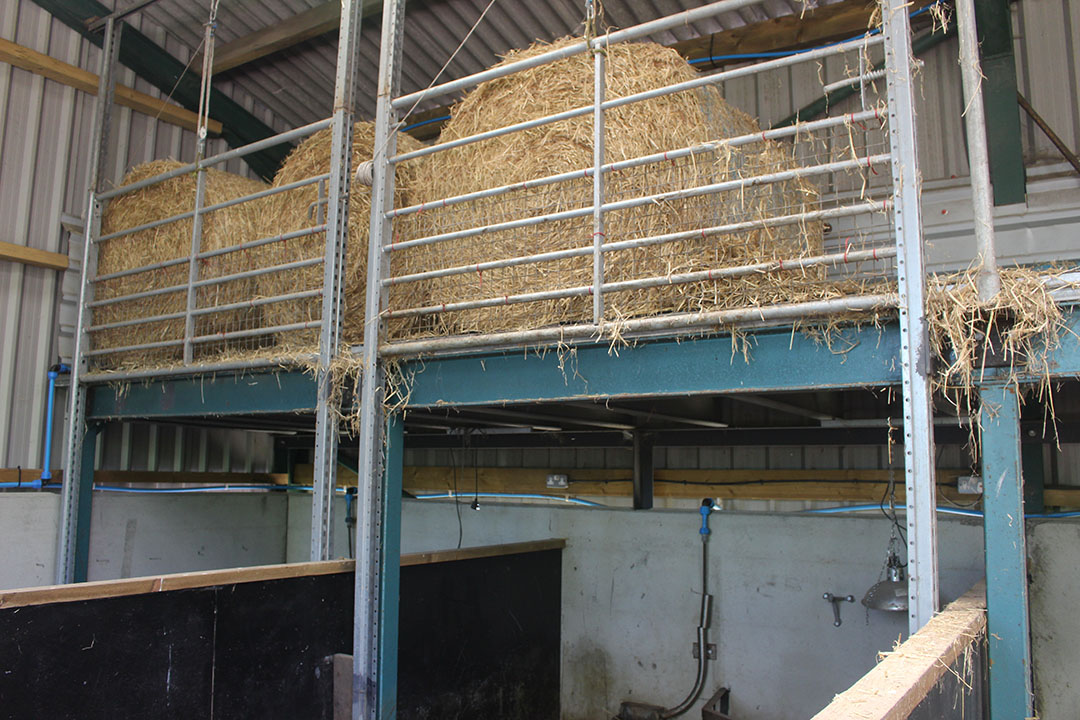
Around farrowing, Gibson tends to hang up a camera system, so she can see exactly what is going on there at any moment of the day. Even during her work in the salon, part of her attention is with the animals in the barn – and she can give instructions to her partner or children if necessary. She says, “The customers at the hair dressers’ love it. Once a pig gets born there’s quite a few people peering over my shoulder and they would like to see exactly what is going to happen.”
Especially during the first 48 hours after birth, care is necessary to make sure the little pigs do not get crushed. “I usually take into account that we may lose 1 or 2. We try to observe and make it clear to them that the nest at the far end is theirs. They get the idea fairly quickly. Then they drink and go back to their place.”
“It costs a lot of hours and a lot of work,” Gibson says with a big smile. “You definitely have to love what you are doing; otherwise it does not pay off.”
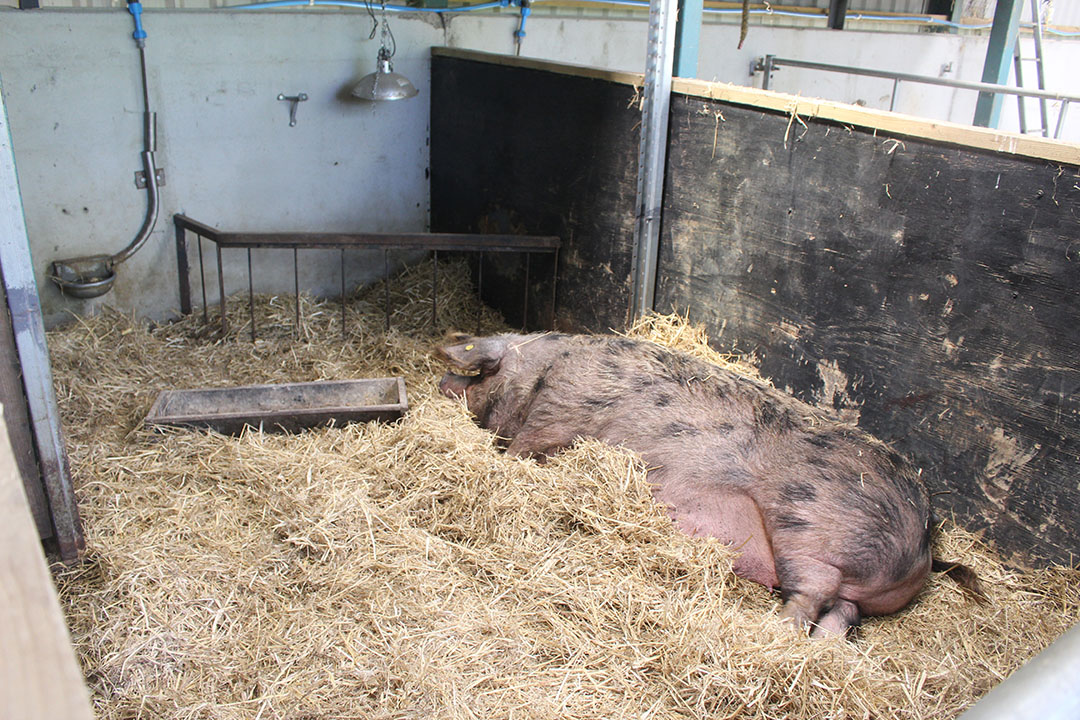
Meanwhile, Duchess throws some straw in the air and seems to be playing with it. Kelly Gibson stares at her. “I can do that for hours, just see how the animals behave. She likes to be tossing around her straw a lot and then finds herself a nice place to lie down.” As soon as the animal lies down, a humming sound follows. “Yep. Now she is snoring.”
